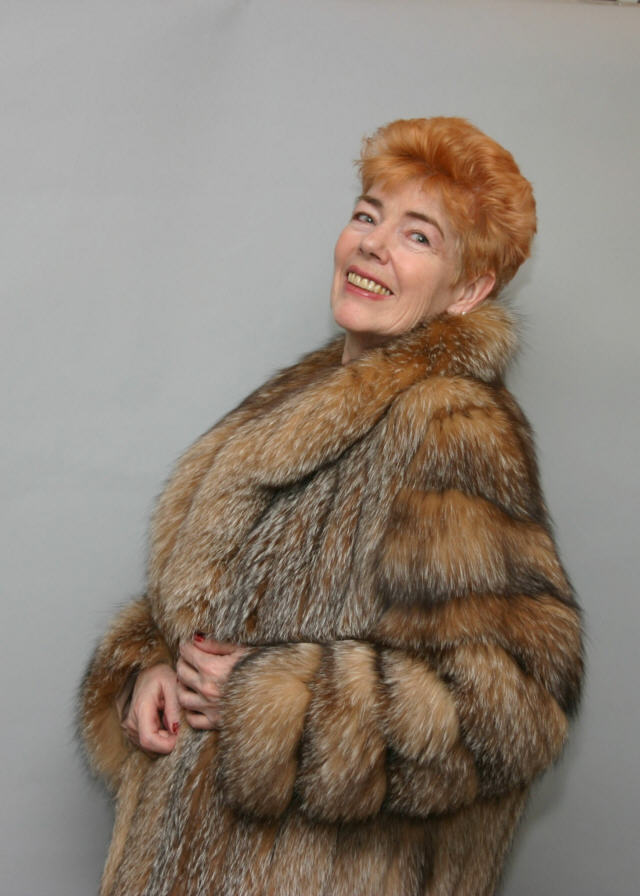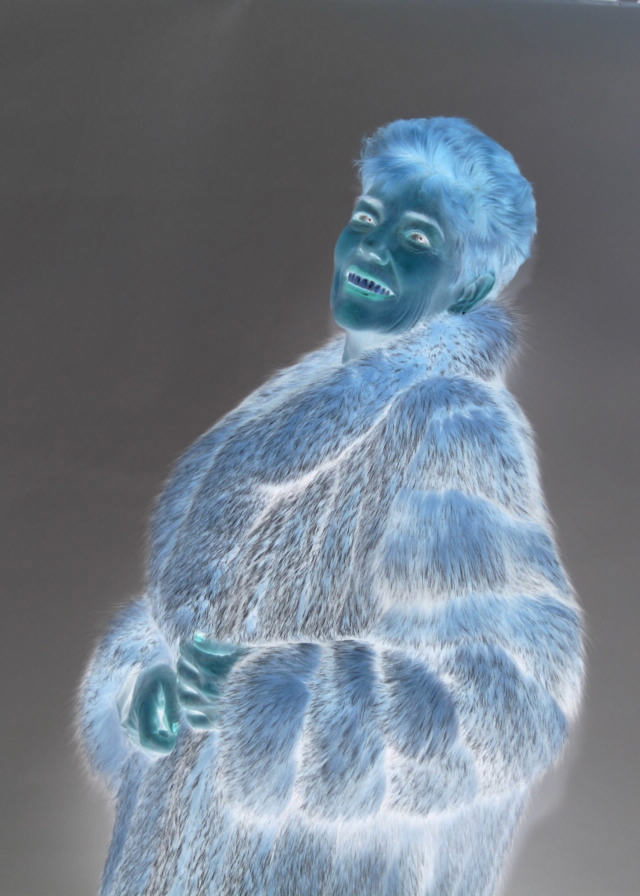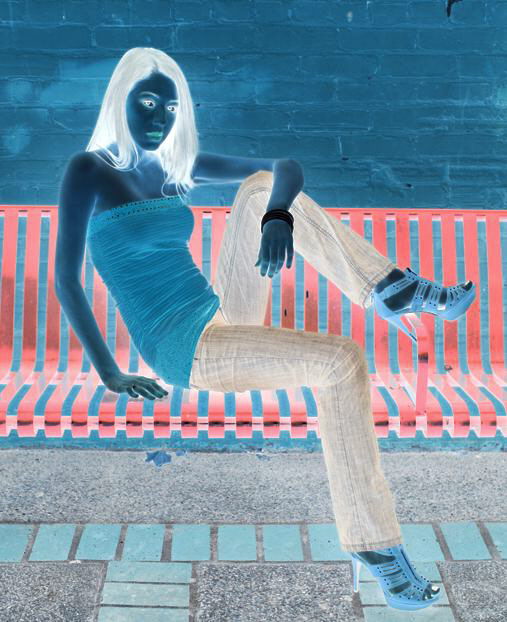Doug Kerr
Well-known member
Probably about the time of greatly-increasing interest in using the raw output of digital cameras, it became popular to explain the significance of the raw file as being rather like the "negative" in film photography. Usually, there was no counterpart: the actual image file was not said to be equivalent to any object in film photography (although some said it is like "the print").
This metaphor was somewhat solidified with the development of Adobe's raw data format, which they define in their "Digital Negative (DNG) Specification".
But the metaphor is not accurate, and overly-literal reliance on it can mislead us (or others).
In film work, the term "negative" is almost always taken to mean the developed negative, and that is appropriate: the exposed but undeveloped film does not carry either a "negative" or "positive" image - only a latent image. For "negative-type" film, when we process this in the conventional way, we get a negative image, but we can also process it so as to get a positive image (although of course that is best done with "reversal" film, intended for that scheme).
In fact, the closest correspondence of our raw file is to the "undeveloped film".
For example, in the case of film, if we have in hand the undeveloped film, we can choose to develop it in different ways, for example in a way that increases the effective ISO sensitivity of the film (if we have, inadvertently or intentionally, exposed it with less than "standard" exposure).
In the case of color negative photography, we can choose to develop the film in a way that will apply white balance color correction (more about this later).
And, by way of comparison, we have all these options, and others, when we extract an actual image from our digital raw file (an operation often called, quite aptly in my opinion, "development" of the image).
An important distinction is that, in the case of film, once we have developed it using one "recipe", we cannot later develop it again with a different recipe. In the case of our raw file, we can develop it as many times as we wish, using a different recipe each time, so as to get different results - perhaps searching for the "best", or perhaps to derive different images for different uses.
So our raw file is perhaps best considered the equivalent of the "undeveloped film". What about the image we get by "raw conversion" or "development"? Well, it is perhaps most like the "developed film". (I did not say, "the developed negative", since normally it is a positive, not negative image).
Now, if we really want to complete our suite of metaphors, what is closest to the print in film photography? Well the print, or in fact, the image as displayed on a screen.
So I encourage you, when you are explaining the concept of the raw file to a colleague (perhaps new to serious digital photography), to be careful about saying it is "like the negative in film photography". If the listener actually knows better, this may do more harm than good - he may have trouble getting this to gel in his mind.
I will close with an anecdote about the fact that we can only develop film once. In Stanley Kubric's epochal 1968 film, "2001: A Space Odyssey", there was a scene that would composite live action with an elaborate scale mockup of some part of the spacecraft. For some logistic reason (I forget the details of the incident these days), the live action could only be shot at a certain time (I think one of the actors would then go onto another production elsewhere) before the mockup could be completed (it was very complex). (The film had a very long post.)
Kubric (and his D/P, Unsworth, I believe it was) were obsessed with maintaining color balance consistency in composited shots. Accordingly, the undeveloped film from the live action shots was stored for some while (I think it may have been over a year) in an air-conditioned vault, along with many color test shots on the same film stock.
After the shots of the mockup were done (along with many test shots on that batch of stock), test shots from both components were developed and colorimetric observations made. Based on that, development "recipes" for each, hopefully to attain the proper colorimetric consistency, were use to develop other test shots, and the process iterated until the "ideal" pair of recipes was determined.
The actual footage of the live action scene, and the much-later-shot scenes of the mockup, were then developed using those respective recipes, and then the compositing went forward.
So imagine how blessed we are today to be able to keep our "undeveloped film", even after we have once "developed" it. If some critic says, "cute girl, but she looks awfully orange", we can go back and "develop" the raw file again, with a different white balance color correction vector, or other choices of processing parameters.
Meanwhile, I describe my raw files as being like "raw files".
Best regards,
Doug
This metaphor was somewhat solidified with the development of Adobe's raw data format, which they define in their "Digital Negative (DNG) Specification".
But the metaphor is not accurate, and overly-literal reliance on it can mislead us (or others).
In film work, the term "negative" is almost always taken to mean the developed negative, and that is appropriate: the exposed but undeveloped film does not carry either a "negative" or "positive" image - only a latent image. For "negative-type" film, when we process this in the conventional way, we get a negative image, but we can also process it so as to get a positive image (although of course that is best done with "reversal" film, intended for that scheme).
In fact, the closest correspondence of our raw file is to the "undeveloped film".
For example, in the case of film, if we have in hand the undeveloped film, we can choose to develop it in different ways, for example in a way that increases the effective ISO sensitivity of the film (if we have, inadvertently or intentionally, exposed it with less than "standard" exposure).
In the case of color negative photography, we can choose to develop the film in a way that will apply white balance color correction (more about this later).
And, by way of comparison, we have all these options, and others, when we extract an actual image from our digital raw file (an operation often called, quite aptly in my opinion, "development" of the image).
An important distinction is that, in the case of film, once we have developed it using one "recipe", we cannot later develop it again with a different recipe. In the case of our raw file, we can develop it as many times as we wish, using a different recipe each time, so as to get different results - perhaps searching for the "best", or perhaps to derive different images for different uses.
So our raw file is perhaps best considered the equivalent of the "undeveloped film". What about the image we get by "raw conversion" or "development"? Well, it is perhaps most like the "developed film". (I did not say, "the developed negative", since normally it is a positive, not negative image).
Now, if we really want to complete our suite of metaphors, what is closest to the print in film photography? Well the print, or in fact, the image as displayed on a screen.
So I encourage you, when you are explaining the concept of the raw file to a colleague (perhaps new to serious digital photography), to be careful about saying it is "like the negative in film photography". If the listener actually knows better, this may do more harm than good - he may have trouble getting this to gel in his mind.
I will close with an anecdote about the fact that we can only develop film once. In Stanley Kubric's epochal 1968 film, "2001: A Space Odyssey", there was a scene that would composite live action with an elaborate scale mockup of some part of the spacecraft. For some logistic reason (I forget the details of the incident these days), the live action could only be shot at a certain time (I think one of the actors would then go onto another production elsewhere) before the mockup could be completed (it was very complex). (The film had a very long post.)
Kubric (and his D/P, Unsworth, I believe it was) were obsessed with maintaining color balance consistency in composited shots. Accordingly, the undeveloped film from the live action shots was stored for some while (I think it may have been over a year) in an air-conditioned vault, along with many color test shots on the same film stock.
After the shots of the mockup were done (along with many test shots on that batch of stock), test shots from both components were developed and colorimetric observations made. Based on that, development "recipes" for each, hopefully to attain the proper colorimetric consistency, were use to develop other test shots, and the process iterated until the "ideal" pair of recipes was determined.
The actual footage of the live action scene, and the much-later-shot scenes of the mockup, were then developed using those respective recipes, and then the compositing went forward.
So imagine how blessed we are today to be able to keep our "undeveloped film", even after we have once "developed" it. If some critic says, "cute girl, but she looks awfully orange", we can go back and "develop" the raw file again, with a different white balance color correction vector, or other choices of processing parameters.
Meanwhile, I describe my raw files as being like "raw files".
Best regards,
Doug




